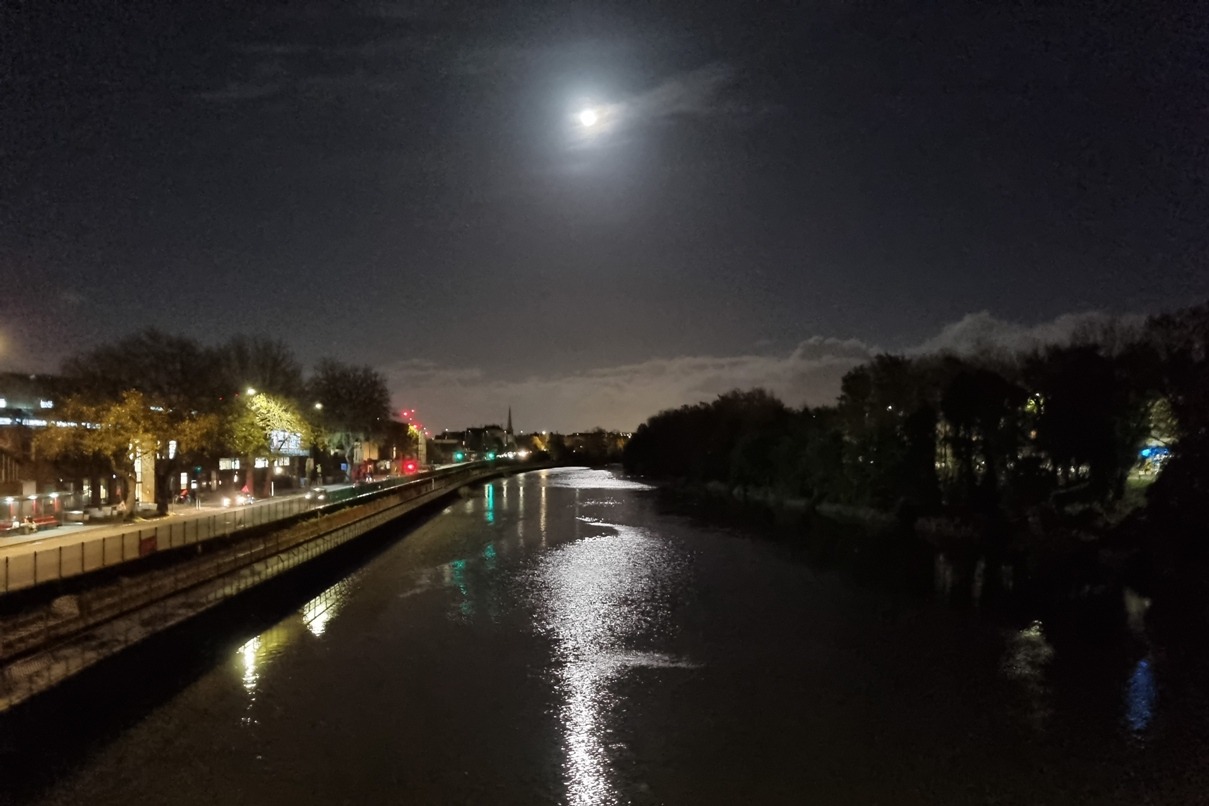Without the influence of the moon, the Cut would never have been built, nor would it have its intriguing changes of water levels or the unique habitat of brackish water.
Tides ebb and flow to give 2 high tides and 2 low tides in every 25 hours and these fluctuations were very inconvenient for ships in the city docks. Ships were aground except around high tides and could not be serviced. It was said that it could take up to a week to load and unload a ship at Bristol, rather than a single day in other ports. This led to the construction of the New Cut more than 200 years ago to divert the tidal flow and keep the docks at a constant level.
Tides are caused by the gravitational pull of the moon on the Earth’s oceans. The sun has a similar but lesser effect and the passage of the moon around the Earth and the Earth around the sun combine with the Earth revolving around its own axis to produce regular patterns of tidal ebbs and flows. These patterns are predictable and may be expressed as ‘tide tables’.
At 16.8m, the difference between highest and lowest tidal water levels is greater in the Bristol Channel than almost any other urban area in the world.
The effects of weather are less predictable but low atmospheric pressure, heavy rain and high winds may increase the flow of water considerably to cause flooding at high tides. Bristol has a ’tide watch’ team operating around the times of the highest tides to mitigate the risk of floods.
The New Cut offers an ideal place to observe the tides. The flow of sea water rises up the Cut and the River Avon as far as Hanham Lock. If you look at the vastly changing water levels along this stretch, this is exactly what the city docks experienced before the construction of the New Cut.
The fresh water which flows down the river mixes with the salt water flowing up with the tides to form a brackish water habitat which favours some plants and animals. The regular exposure of the muddy banks attracts many birds which feed on the organisms which grow in the mud.
Source: Admiralty Easytide website
